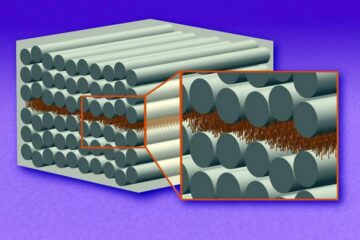New study reveals the effect of habitat fragmentation on the forest carbon cycle

Forests around the world have become increasingly fragmented, and in the UK three quarters of woodland area lie within 100 metres of the forest edge. It has long been known that so-called 'edge effects' influence temperature and moisture (the 'microclimate') in woodlands, but the influence on the carbon cycle is largely unknown.
Researchers from the University of Exeter and Earthwatch in the UK combined experiments with mathematical modelling to fill this knowledge gap. Wood blocks were placed in Wytham Woods near Oxford at various distances from the forest edge, and left to decay over two years.
The measured decay rates were applied to a model of the surrounding landscape, to allow comparison between the current fragmented woodland cover and decay rates in continuous forest.
The research, published today in the journal Global Change Biology, shows that wood decay rates in the southern UK are reduced by around one quarter due to fragmentation. This effect is much larger than expected due to variation in temperatures and rainfall among years.
Dr Dan Bebber of the University of Exeter said: “We were surprised by the strength of the edge effect on wood decay, which we believe was driven by reduced moisture at the forest edge impairing the activity of saprotrophic fungi – those that live and feed on dead organic matter”.
Wood decay, and the recycling of other biological matter like leaf litter, is driven by fungi and other microbes that are sensitive to temperature and moisture. The difference between the absorption of carbon dioxide via photosynthesis by trees, and the release of carbon by microbes, determines the overall carbon balance of the forest.
Dr Martha Crockatt of Earthwatch said: “Saprotrophic fungi control the cycling of carbon and nutrients from wood in forests, and their responses to changes in microclimate driven by fragmentation, and also climate change, will influence whether forests are a carbon source or sink”.
The southern UK has a temperate climate with moderate temperatures and rainfall. Similar studies in different parts of the world, from the warm tropics to the cooler boreal regions, are needed to understand how edge effects on decomposition vary globally.
“Edge effects on moisture reduce wood decomposition rate in a temperate forest” by M. E. Crockatt & D. P. Bebber, is published in Global Change Biology.
Media Contact
More Information:
http://www.exeter.ac.ukAll latest news from the category: Studies and Analyses
innovations-report maintains a wealth of in-depth studies and analyses from a variety of subject areas including business and finance, medicine and pharmacology, ecology and the environment, energy, communications and media, transportation, work, family and leisure.
Newest articles

“Nanostitches” enable lighter and tougher composite materials
In research that may lead to next-generation airplanes and spacecraft, MIT engineers used carbon nanotubes to prevent cracking in multilayered composites. To save on fuel and reduce aircraft emissions, engineers…

Trash to treasure
Researchers turn metal waste into catalyst for hydrogen. Scientists have found a way to transform metal waste into a highly efficient catalyst to make hydrogen from water, a discovery that…

Real-time detection of infectious disease viruses
… by searching for molecular fingerprinting. A research team consisting of Professor Kyoung-Duck Park and Taeyoung Moon and Huitae Joo, PhD candidates, from the Department of Physics at Pohang University…





















